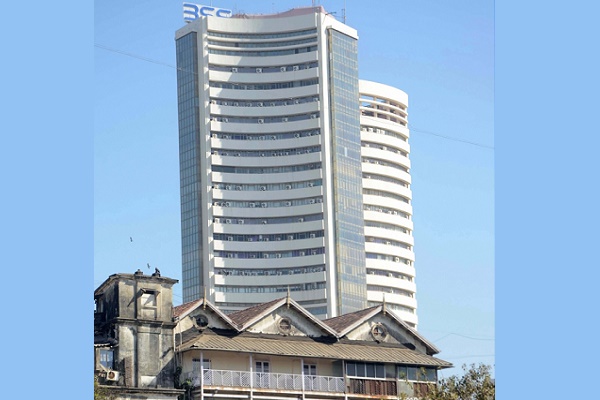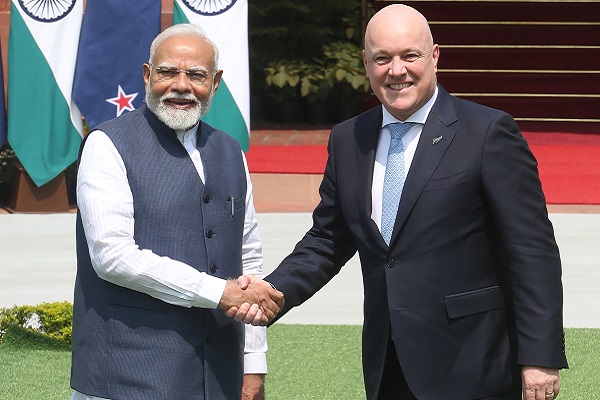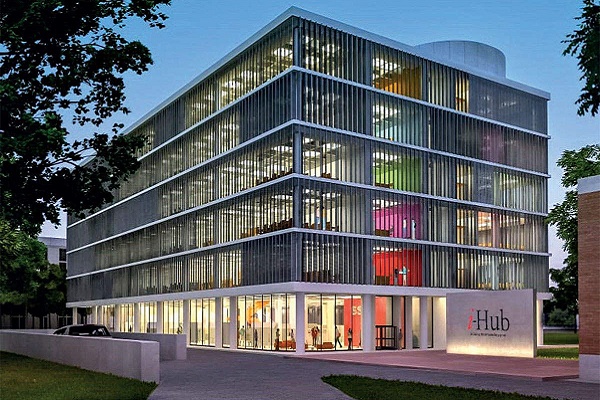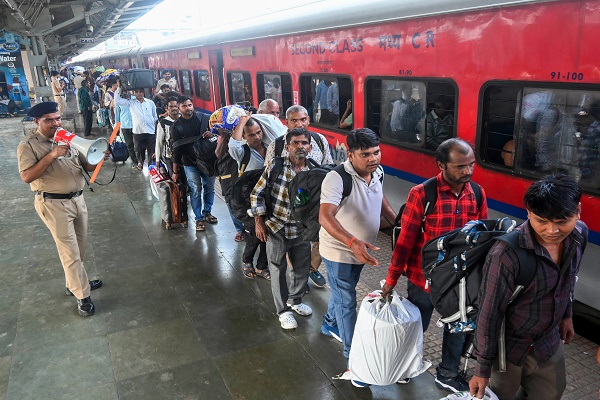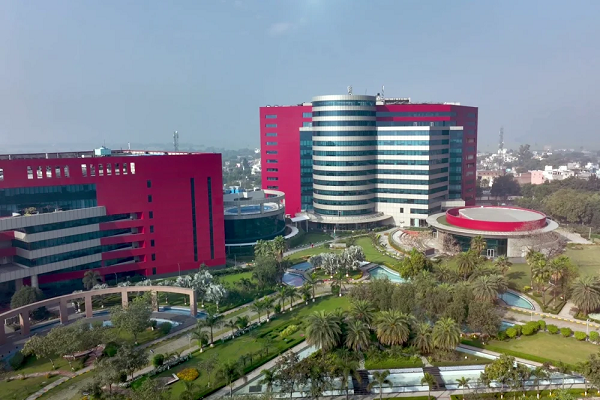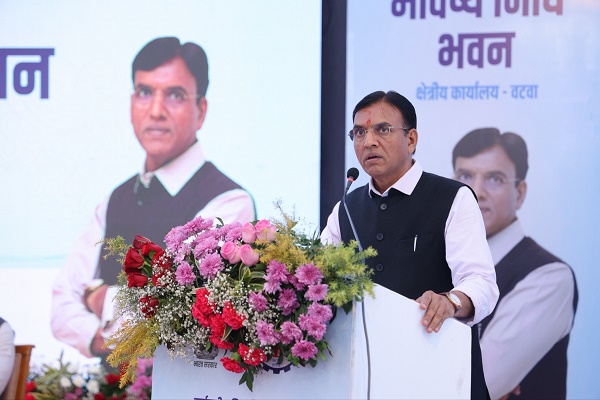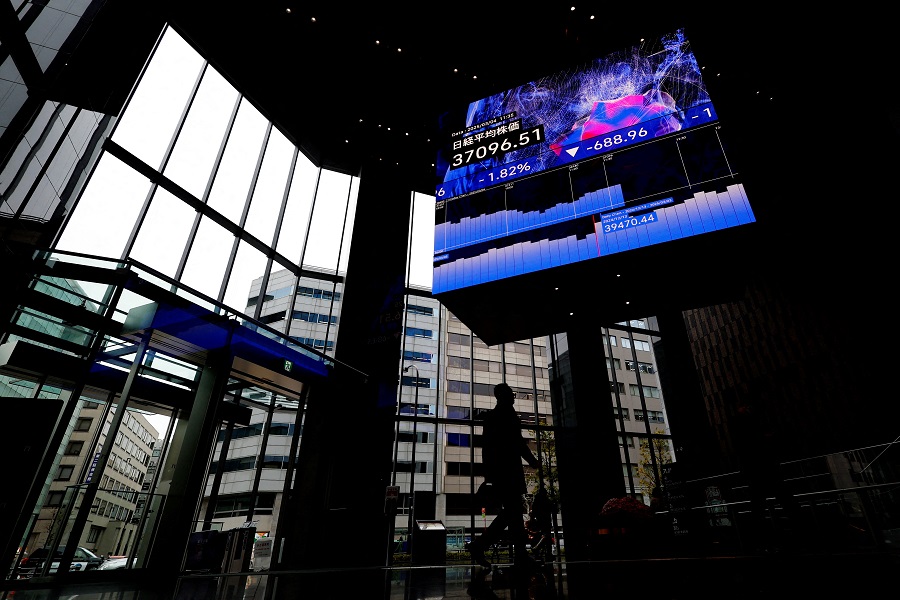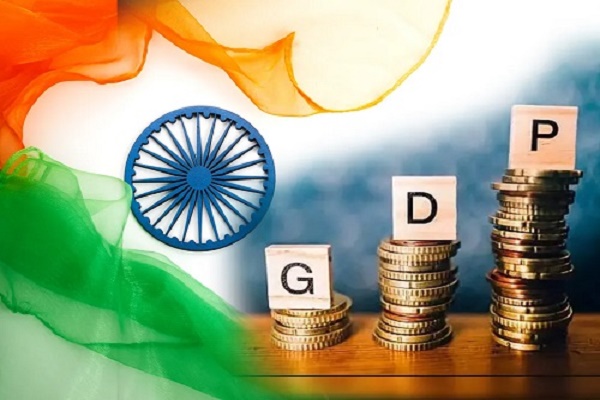Patel Retail coming with IPO to raise upto Rs 243 crore

Patel Retail
- Patel Retail is coming out with a 100% book building; initial public offering (IPO) of 95,20,000 shares of Rs 10 each in a price band Rs 237-255 per equity share.
- Not more than 30% of the issue will be allocated to Qualified Institutional Buyers (QIBs), including 5% to the mutual funds. Further, not less than 25% of the issue will be available for the non-institutional bidders and the remaining 45% for the retail investors.
- The issue will open for subscription on August 19, 2025 and will close on August 21, 2025.
- The shares will be listed on BSE as well as NSE.
- The face value of the share is Rs 10 and is priced 23.70 times of its face value on the lower side and 25.50 times on the higher side.
- Book running lead manager to the issue is Fedex Securities.
- Compliance Officer for the issue is Prasad R Khopkar.
Profile of the company
Patel Retail is primarily engaged as a retail supermarket chain operating in tier-III cities and nearby suburban areas, with focus on “value retail”, offering food, non-food (FMCG), general merchandise and apparel catering to the needs of the entire family. Incorporated in Fiscal 2008, the company started its first store under the brand “Patel’s R Mart” at Ambernath, Maharashtra and since, its operations are spread across the suburban area of Thane and Raigad district in Maharashtra. As on May 31, 2025, it operates and manages forty-three stores, with a Retail Business Area25 of approx. 1,78,946 sq.fts.
With its objective to increase margin and to promote its brand “Patel’s R Mart”, it launched its private label goods comprising of Pulses (Patel Fresh) and spices (Indian Chaska), which it buys in bulk quantities and package and brand after its quality checks and inspections at its processing and packing facility at Ambernath, Maharashtra (Facility 1), and men’s wear (Blue Nation), home improving products (Patel Essentials), ready-to-cook / instant mix (Patel Fresh), ghee and papad (Indian Chaska) which it buys from third party vendors under its brands. Since incorporation in Fiscal 2008, the company has increased its store offerings and as on May 31, 2025 it offers around 38 product categories with over 10,000 product SKUs in its stores.
Further, by capitalizing its sourcing strength it ventured into export of staples, groceries, pulses, spices and pulps. It exports these products under its brand Patel Fresh & Indian Chaska and also that of the brand of its customers from its Manufacturing Facilities. Furthermore, it also undertakes domestic and export trading of assorted/ mix container of food and non-food products, such as FMCG goods, household items, kitchen appliances, etc. from reputed third-party brands and also into bulk trading of agri commodities such as, rice, sugar, pulses, edible oil etc. It has exported to over thirty-five countries during the disclosed financial period.
Proceed is being used for:
- Repayment/prepayment, in full or part, of certain borrowings availed by the company
- Funding of working capital requirements of the company
- General corporate purposes
Industry Overview
The Indian retail industry is a key driver of the Indian economy, and its contribution is significant in terms of value and its share in country’s total workforce. It contributed around 10% to the country’s total GDP and employs around 8% of the total workforce. The sector is growing at a brisk pace fuelled by the rapid urbanization, a growing middle class, steady increase in national wages and disposable incomes, and expanding consumer spending. The Indian retail sector, valued at $1,260 billion in 2024, is expected to grow steadily, reaching $1,300 billion by 2025 and further expanding to $1,890 billion by 2030 and $2,000 billion by 2033. This translates to a robust CAGR of approximately 7% during the 2024-2030 period, driven by rising consumer demand, urbanization, and increasing penetration of organized retail formats. Post 2030, the growth is projected to moderate, with the sector anticipated to reach $2,000 billion by 2033, marking a CAGR of around 2% over 2030-2033. This growth trajectory underscores the sector's resilience and long-term potential amid evolving consumption patterns.
India’s food retail market has undergone a significant transformation over the past decade and is projected to reach approximately $850 billion by 2025. This growth has been propelled by rising per capita income, rapid urbanization, the emergence of dual-income households, and the expansion of modern trade channels such as cash-and-carry formats and e-commerce platforms. The country supports a vast distribution network with over 12 million grocery stores and more than one million wholesalers and distributors, catering to the needs of retail, food processing, and food service sectors. The country’s demographic dividend coupled with the higher investment and the favourable regulatory framework are expected to continue fuelling the food and grocery growth in India which is projected to grow 10% CAGR between 2022-2030. The increasing consumption of processed foods, rising demand of quality goods and services, premiumization trends and wider access to rural market will continue to push the Indian food and grocery retail market.
The Indian retail industry has undergone a remarkable evolution since the liberalization of the economy in 1991, marked by significant developments in organized retail. While various retail models have emerged, 'value retail' continues to hold allure for consumers, especially in the grocery segment, which constitutes nearly 63% of the country's retail consumption. Initially all supermarkets were concentrated in metropolitan areas due to higher population density, greater purchasing power, and the presence of infrastructure and amenities conducive to large-scale retail operations. However, supermarkets recognized the potential for growth beyond metros and leveraged their strengths in offering a modern shopping experience, diverse product range, and competitive pricing to attract consumers. Thus, supermarkets successfully expanded their footprint to smaller towns and cities, reflecting a strategic response to market dynamics and consumer demand.
Pros and strengths
Deep knowledge and understanding of optimal product assortment and inventory management using IT systems: Under its retail business, the company sells a wide range of goods and merchandise across its product categories i.e. Food, Non-Food (FMCG), general merchandise and apparels. For instance, each of its retail stores offer over 10,000 SKUs. It focuses on using its deep knowledge of the clusters and regions in which it operates to customise its product assortment in each store keeping in mind local demands and preferences. It also continuously focuses on enhancing the goods and merchandise it carries. It has benefitted from its in-depth understanding of local needs and its ability to respond quickly to changing consumer preferences. This has been achieved in part due to its advanced IT systems. It uses its IT systems for procurement, sales and inventory management which enables it to identify and quickly react to changes in customer preferences by adjusting its products available, brands carried, stock levels and pricing in each of its stores and effectively monitor and manage the performance of each of its stores.
Steady footprint expansion using a distinct store acquisition strategy and ownership model: The company’s business has grown steadily in recent years, primarily through expansion of its store network from one store in Fiscal 2008 to 42 stores as of March 31, 2025 across 16 cities/ suburban areas within the Thane and Raigad District in the state of Maharashtra. It has expanded its footprint using a cluster-based approach. It has strengthened its existing presence in locations where it operates by opening new stores within a radius of a few kilometers of its existing stores. This has ensured the creation of a cluster of stores within a region in which, the company has developed a better understanding of local needs and preferences and enabled it to tailor its offering.
Strong logistics and distribution network: The company’s distribution and logistics network comprises one Distribution Centre at Ambernath, Maharashtra for catering to its retail business. Besides, it has its own fleet of 18 trucks, which helps it to transport and deliver its products in a cost and time efficient manner. Further, it also uses service of third-party transport service provider for completing its last mile delivery, such as delivery to its customers’ door step. The company’s distribution and logistics set up is well networked and allows it to fulfil the store requisition within short time period of generation and receipt of order, which has helped it to optimize in-store availability of merchandise and minimize transportation costs. Its distribution centre situated at Ambernath, Maharashtra, forms the backbone of its supply chain to support its retail store network which is within a radius of 60 kms.
Diversified product portfolio: Under its retail business, the company’s principle nature of business is to procure everyday use products from reputed brands / manufacturers and provide the same to end consumers through its network of retail stores. Further, it also sells food products such as whole spices, powder spices, wheat flour and refined wheat flour, pulses, mango pulp, staples and groceries and home improving products under its own brands Indian Chaska, Patel Fresh and Patel Essentials through its network of retail stores and also through wholesalers, retailers both in the domestic and export market. Further, it is also engaged in trading of food and non-food products of reputed third-party brands and also in unbranded bulk quantity. Further, these products are available in different varieties.
Risks and concerns
Do not manufacture some of its products in own facilities: The company does not manufacture some of its products such as papad, ghee, asafoetida (hing) etc. in its own Facilities. It procures them from third party manufacturers. It has limited influence and control over the manufacturing processes and quality control measures implemented by these manufacturers. Further, it may face increased costs if such third-party manufacturers raise their prices. This could result in decreased profit margins and adversely affect its business, results of operations, financial condition and cash flow.
Geographical constrain: All the company’s retail stores are concentrated in the state of Maharashtra, more particularly within the Thane and Raigad district. In the Financial Years 2024-25, 2023-24 and 2022-23, its revenue from Retail sales accounted for Rs 36,886.98 lakh, Rs 28,972.19 lakh and Rs 26,655.66 lakh, representing 44.95%, 35.58% and 26.17% of its revenue from operations, respectively. Any adverse developments affecting its operations in such region, could have an adverse impact on its retail business, financial condition, results of operations and cash flows.
High debt equity ratio: The company has a high debt equity ratio and may face certain funding risks. Its debt-to-equity ratio for the Fiscal 2025, Fiscal 2024 and Fiscal 2023 was 1.34, 1.97 and 2.54, respectively. Any further increase in borrowings may have a material adverse effect on its business, financial condition and results of operations. Further, if it does not generate sufficient amount of cash flow from operations, its liquidity and ability to service its indebtedness could be adversely affected.
Significant amount of working capital requirement: As on May 31, 2025, the company had sanctioned facilities aggregating Rs 21,766.68 lakh, including non-fund-based limit and outstanding facilities aggregating Rs 16,506.62 lakh, including non-fund based limit. The retail industry is working capital intensive and incurs lot of fixed expenditures for operation of stores and maintenance of inventory levels. The company intends to continue growing by setting up additional stores. All these factors may result in increase in the quantum of current assets. Further, its business requires significant working capital in connection with its manufacturing operations, including financing its inventory, purchase of raw materials which may be adversely affected by changes in terms of credit and payment.
Outlook
Patel Retail is a retail supermarket chain that operates primarily in tier-III cities and nearby suburban areas. The stores offer a wide range of products, including food, non-food (FMCG), general merchandise, and apparel. The company has steady footprint expansion using a distinct store acquisition strategy and ownership model. It has strong logistics and distribution network with own fleet of 18 trucks. On the concern side, all its retail stores are concentrated in the state of Maharashtra, more particularly within the Thane and Raigad district. Any adverse developments affecting its operations in such region, could have an adverse impact on its retail business, financial condition, results of operations and cash flows. The company has a high debt equity ratio and may face certain funding risks. Any further increase in borrowings may have a material adverse effect on its business, financial condition and results of operations.
The issue has been offering 95,20,000 shares in a price band of Rs 237-255 per equity share. The aggregate size of the offer is around Rs 225.62 crore to Rs 242.76 crore based on lower and upper price band respectively. Minimum application is to be made for 58 shares and in multiples thereon, thereafter. On performance front, the company’s revenue from operations increased by 0.80% from Rs 81,418.83 lakh in Fiscal 2024 to Rs 82,069.29 lakh in Fiscal 2025. Moreover, the company’s profit after tax for the year increased by 12.18% from Rs 2,253.34 lakh in Fiscal 2024 to Rs 2,527.81 lakh to Fiscal 2025.
The company intends to further enhance its position in the retail business in Maharashtra by increasing its market penetration and expanding its store network in the state. As on May 31, 2025, its stores are located across 17 cities / suburbans area within the Thane & Raigad District of Maharashtra. It plans to deepen its store network in the western suburban area of the MMR such as Mira Road, Bhayander, Virar, Vasai and also in the municipal region of Pune, Maharashtra following its cluster-focused expansion strategy. Selection of suitable locations for its stores has been critical to its expansion plans. It aims to enter into target markets to take advantage of the opportunities offered by these under-served regions and actively search for suitable locations. It follows a cluster approach and target densely-populated neighbourhoods and residential areas with a majority of lower-middle, middle and aspiring upper middle class consumers.

